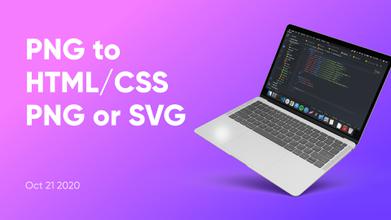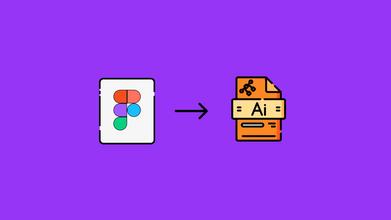How to Create Awesome Websites with Minimal Effort
Jun 25, 2024 7661 seen
Introduction
Every website owner wants their website to be simply the best so that users will be satisfied with their experience and likely will be back. Thankfully, with the right tools and strategies, creating a beautiful website doesn't have to be time-consuming or complicated.
Here, we'll explore practical tips and techniques to help you create visually appealing websites with minimal effort.
Use AI-Powered Design Tools
One of the most effective ways to simplify the web design process is to use AI-powered design tools. Platforms like Fronty offer innovative solutions that automate much of the design work, allowing you to focus on the creative aspects.
Benefits of AI-Powered Design Tools:
- Speed: Quickly convert your design ideas into functional websites.
- Accuracy: Ensure that your design vision is accurately represented.
- Efficiency: Save time and resources by automating repetitive tasks.
By uploading an image of your design, Fronty's AI can generate the HTML and CSS code needed to bring your vision to life. This speeds up the development process and ensures a high level of accuracy.
Choose a User-Friendly Website Builder
Website builders have revolutionized the way we create websites. They provide intuitive drag-and-drop interfaces that make it easy to design professional-looking websites without coding knowledge. Popular website builders include Wix, Squarespace, and WordPress.
Key Features of Website Builders:
- Templates: Start with pre-designed templates that you can customize to fit your needs.
- Widgets and Plugins: Enhance your site with additional functionalities like contact forms, galleries, and social media integrations.
- Responsive Design: Ensure your website looks great on all devices.
Picking High-Quality Visuals
Visual elements play a crucial role in making your website attractive. High-quality images, videos, and graphics can significantly enhance your site's overall look and feel.
Tips for Using Visuals:
- Stock Photos: To find high-resolution images, use free and premium stock photo websites like Unsplash, Pexels, and Shutterstock.
- Graphics and Icons: Use tools like Canva or Adobe Spark to create custom graphics and icons that align with your brand.
- Videos: Incorporate engaging videos to provide a dynamic experience for your visitors.
Remember to optimize your visuals for web use to ensure fast loading times. Compress images and videos without compromising quality to improve your site's performance.
Minimalist Design Is Always The Best
A minimalist design approach can make your website look clean, modern, and professional. You can create an aesthetically pleasing site with minimal effort by focusing on simplicity.
Principles of Minimalist Design:
- White Space: Use ample white space to create a clean, uncluttered look.
- Simple Color Schemes: Stick to a limited color palette to maintain visual harmony.
- Typography: Choose simple, easy-to-read fonts and use them consistently throughout your site.
Minimalist design looks great and improves user experience by making navigation intuitive and content easy to digest.
Implement Consistent Branding
Consistency in branding is key to creating a professional and cohesive website. Your website should reflect your brand's identity and values, which helps build trust and recognition among your audience.
Elements of Consistent Branding:
- Logo: Prominently on your website, typically in the header.
- Color Scheme: Use your brand's colors consistently across all pages and elements.
- Typography: Select fonts that match your brand's style and use them uniformly.
- Voice and Tone: Maintain a consistent voice and tone in your content to reflect your brand's personality.
Keeping your branding consistent creates a seamless experience for your visitors, reinforcing your brand's message.
Optimize for Mobile
With the increasing use of mobile devices, ensuring your website is mobile-friendly is essential. A responsive design automatically adjusts your website's layout to fit different screen sizes, providing an optimal viewing experience on any device.
Tips for Mobile Optimization:
- Responsive Templates: Use templates that are designed to be responsive.
- Mobile-Friendly Navigation: Simplify menus and navigation to make browsing your site easy for mobile users.
- Touch-Friendly Elements: Ensure buttons and links are large enough to tap on a touchscreen easily.
Testing your website on various devices and screen sizes will help you identify and fix any issues, ensuring a smooth user experience for all visitors.
Use Modern Web Design Trends
Keeping up with current web design trends can help your website feel fresh and relevant. Modern design elements enhance your site's visual appeal and improve functionality and user engagement.
Popular Web Design Trends:
- Micro-Animations: Add subtle animations to guide user interactions and provide feedback.
- Dark Mode: Offer a dark mode option to reduce eye strain and give your site a contemporary look.
- Neumorphism: Create a soft, 3D effect using shadows and highlights to make elements appear more tactile.
Incorporating these trends can give your website a modern edge and keep it aligned with user expectations.
Prioritize User Experience
A visually stunning website is not just about aesthetics; it's also about providing a great user experience. Ensuring your website is easy to navigate, with clear calls to action and intuitive design, will keep visitors engaged and encourage them to explore further.
Enhancing User Experience:
- Fast Loading Times: To ensure quick load times, optimize images, leverage browser caching, and use content delivery networks (CDNs).
- Easy Navigation: Use clear menus, breadcrumbs, and internal linking to help users find what they want.
- Accessibility: Design your website to be accessible to all users, including those with disabilities, by following accessibility guidelines and best practices.
A positive user experience keeps visitors on your site longer and increases the likelihood of conversions and return visits.


